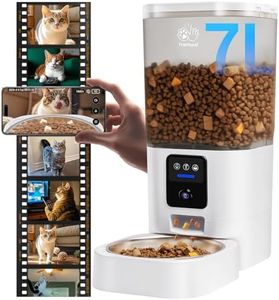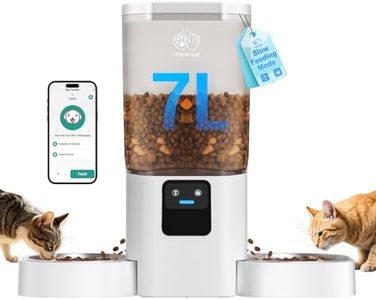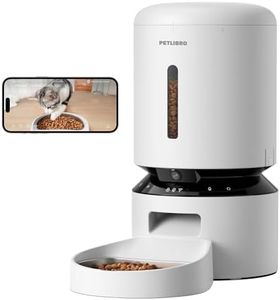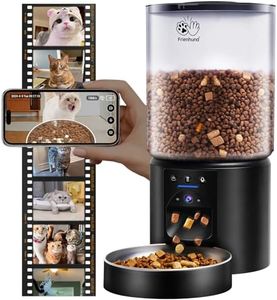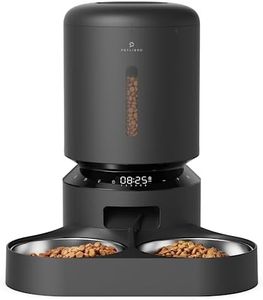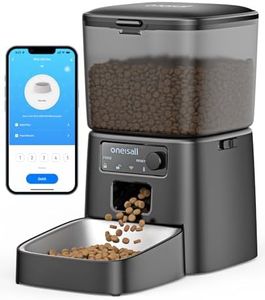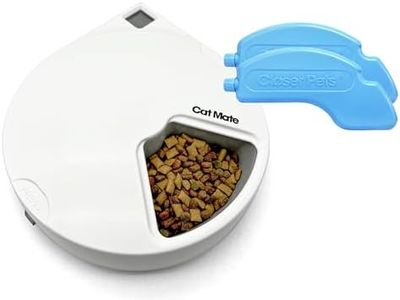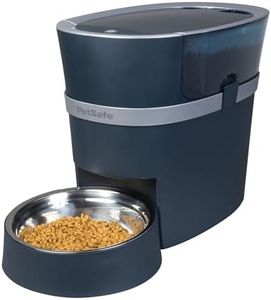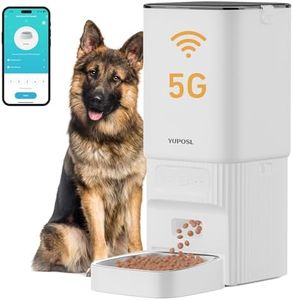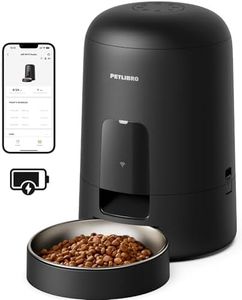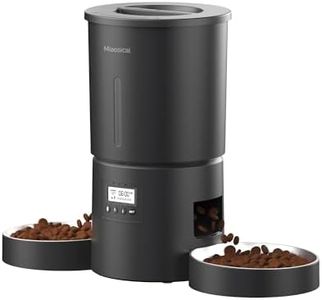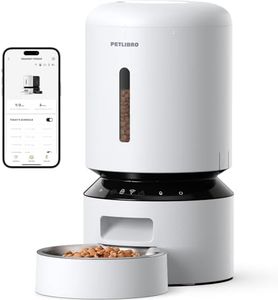We Use CookiesWe use cookies to enhance the security, performance,
functionality and for analytical and promotional activities. By continuing to browse this site you
are agreeing to our privacy policy
10 Best Automatic Dog Feeders
From leading brands and best sellers available on the web.Buying Guide for the Best Automatic Dog Feeders
Choosing an automatic dog feeder can make feeding your pet much more convenient and reliable, especially if you spend long hours away from home or want to keep your dog's meals consistent. The right feeder will help your dog maintain a healthy routine and ensure you're always in control of portion sizes and scheduling. Before picking an automatic dog feeder, it's important to think about your dog's size, eating habits, and special dietary needs, as well as your lifestyle and how much control you want over the feeding process.CapacityCapacity refers to how much food the feeder can hold at once. This is important because it determines how often you have to refill the device and if it can keep your dog fed during longer periods away. Small feeders (up to about 2-3 liters) work well for small dogs or single daily meals, while medium feeders (3-6 liters) are better for medium-sized dogs or households with two small dogs. Large feeders (6 liters or more) are helpful for big dogs or for owners who want to fill the feeder less often. Pick a capacity that matches your dog's daily food intake and your need for convenience.
Portion ControlPortion control is the feeder’s ability to dispense exact amounts of food at each meal. This is crucial for maintaining a healthy diet, preventing obesity, or serving prescription diets. Some feeders allow precise measurement in grams or cups, while others offer preset portions. If your dog is on a strict diet, look for a feeder that lets you specify meal sizes closely. For dogs with flexible diets, simpler portion systems may be sufficient.
Meal SchedulingMeal scheduling is the feature that lets you set the times of day your dog will be fed. Most automatic feeders allow for multiple feedings per day, with some offering more schedule flexibility than others. If your dog needs several small meals or has a specific medical condition, choose a feeder with multiple scheduling options. For dogs who eat twice daily, basic scheduling is usually enough.
Food Type CompatibilityThis specification refers to whether the feeder works with dry kibble, semi-moist, or wet food. Many feeders are designed only for dry kibble and have restrictions on the size and shape of the food pieces. If you feed your dog wet or semi-moist food, you’ll need a model designed for that, possibly with cooling features to keep food fresh. Make sure the feeder matches the kind of food your dog eats daily.
Ease of CleaningEase of cleaning indicates how simple it is to take apart and thoroughly clean the feeder. Hygiene is important to prevent bacteria buildup and keep food fresh, especially if your dog eats wet or semi-moist food. Look for feeders with dishwasher-safe parts or components that can be easily removed and washed. If you value low maintenance, prioritize models with smooth surfaces and minimal nooks or crannies.
Power Source and BackupThis covers whether the feeder is powered by batteries, a wall outlet, or both, and if it has a backup system for power outages. Power reliability ensures your dog doesn’t miss a meal if there’s a blackout. Battery-powered feeders are more portable but need regular battery changes, while plug-in models are more consistent for everyday use. If you travel or live in areas with power issues, choose a feeder with dual power options or battery backup.
Additional FeaturesSome feeders come with extra features like smartphone connectivity, cameras, voice recording functions, or notifications. These can let you monitor your pet, remind your dog of meal times, or adjust feedings remotely. If you want more control or peace of mind while away from home, consider feeders with added features. If you prefer simple devices, a basic feeder without smart functions may be more suitable.
